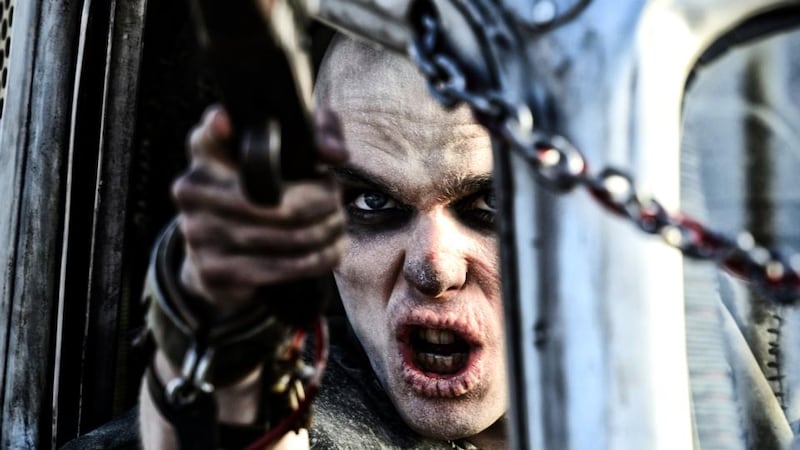George Miller feels that he owes the French cinematic establishment a debt. Back in the late 1970s, while he was working as a young doctor in Australia, he cast the unknown Mel Gibson in an automotive exploitation flick called Mad Max. Miller and his team hoped for little more than short theatrical runs in Melbourne and Sydney, but eager French cineastes saw something special in the film. Nearly 40 years later, Miller launches Mad Max: Fury Road, the delayed fourth episode in the sequence, at the 68th Cannes Film Festival.
“In Japan they saw it as a samurai film. In Scandinavia it was about a Viking. But the French were first to see it as a western on wheels,” he says. “Really it was the Japanese and the French who discovered me.”
He has form within the Cannes elite. Miller, now 70, first served on the jury in 1988. He returned to voting duties in 1999. Does he have any secrets to relate?


“Well, in the 1980s, when I was first on the jury, the screenwriter William Goldman and I decided that, rather than go to the evening screenings, we’d go to the early-morning press screenings. As a result, we knew absolutely nothing about the movie. That was amazing. Information leaks in otherwise.”
Indeed it does. In the current age, digital chatter begins about the big movies when they are nothing more than airy pitches. Rumours of a fourth Mad Max film have been fizzing since Mad Max Beyond Thunderdome, the slightly overblown third episode, was released 30 years ago. We don't have a whole day, but maybe Miller can sketch out the difficult path to the film's completion.
Polygamous maniac
“That is a long story,” he says. “Well, I never intended to make a second, let alone a fourth. In 1999 the idea for this popped into my head. I pushed it away. I kept pushing it away. But the story grew. It’s a full-on action movie. The conceit is to do what Hitchcock did and make a movie where they don’t need to read the subtitles in Japan.”
He has succeeded in that aim. The plot of the new film finds Max, now played by Tom Hardy, helping Charlize Theron’s distaff road warrior transport five distressed women, brides to a polygamous maniac, across the forbidding desert. It really does offer near-continuous action. As Miller explains it, the film was delayed when the dollar collapsed after 9/11. Then Mel Gibson, who was still in the frame, had that “turbulence in his life”. Time moved on. A younger actor now seemed necessary and Hardy looked to fit the monosyllabic bill. Miller and the team returned to Australia.
“We were about to start shooting in the outback of Australia and it rained for the first time in 15 years,” he says. “What was flat red desert was suddenly a flower garden. There were pelicans and frogs everywhere. Warners were great. They let us wait. But after 18 months we stood down and moved from the east coast of Australia to the west coast of Africa.”
He must have occasionally felt the film was cursed.
“You could get the impression that this is the film you couldn’t kill with a stick,” he laughs. “But that’s how the film business goes. You get used to it.”
Miller, an endlessly gregarious fellow, knows what he's talking about. In the decades since Mad Max announced his presence, he has become enormously influential in many fields. He won an Oscar for directing Happy Feet. He co-wrote and co-produced the perennially popular Babe. Yet 40 years ago, this graduate of the University of New South Wales was working as a doctor in an emergency room. How on earth did he get from there to here?
“I was lucky enough to go to university when people still had time to do things other than what they studied,” he muses. “I became fascinated with cinema. People like me and Peter Weir and Bruce Beresford were the same, all working in co-operatives.”
But they weren't doctors. Exceptions such as Che Guevara and Anton Chekhov noted, not many people escape that profession. "Well, I just found myself doing this," he shrugs. "It was funny. When we made Mad Max 2, we needed a doctor on the set because of the stunts, so I stayed registered. But, after a while, you realise you've forgotten too much. You've become a film-maker. It's like a slow dissolve.
“It only occurred to me recently that I wouldn’t be the film-maker I am if I hadn’t had that life experience. There are two major things in common between medicine and film-making: problem solving and a shifting point of view. You see people in extremis as a doctor: in childbirth, when they are distressed. I am utterly curious about who we are as human beings.”
Apocalyptic chic
The first Mad Max film was not an easy sell. Most of those who saw it on release in these territories were subjected to a version dubbed by American actors. This was a long time before the Antipodean invasion that brought us Crowe, Kidman, Blanchett and the rest. As Miller remembers, if you went to the US at that time from Australia, "they were surprised you spoke English". The second film – retitled The Road Warrior in the US – needed no such tidying up. It started a sensation and (though this is easy to forget) established new punkish conventions for apocalyptic chic. Where did that come from?
“Interesting you should say that,” he says. “The first one was set in the future for one reason: we had no money. We had to shoot in empty streets and in cheap, deserted buildings. As a way of explaining it, we put this caption, ‘A few years from now’, at the start. By the second one, we had a bigger budget and could make it work. We have a backstory for everything on this one.”
They have, indeed, constructed a holistic universe with a palpable hinterland. So much time has been invested in Fury Road that satellite projects have spun away from it. George and his team have the seeds of an animated film set in the same world. So, if Fury Road is as big as expected, will he hand on the reins or hang with Max for another adventure?
“Ha, I don’t know. That’s like asking a woman who’s just given birth if she would like another baby.”
Oh dear. I think Dr Miller is criticising my bedside manner.
- Mad Max: Fury Road is in cinemas on Friday, May 15th 2015












